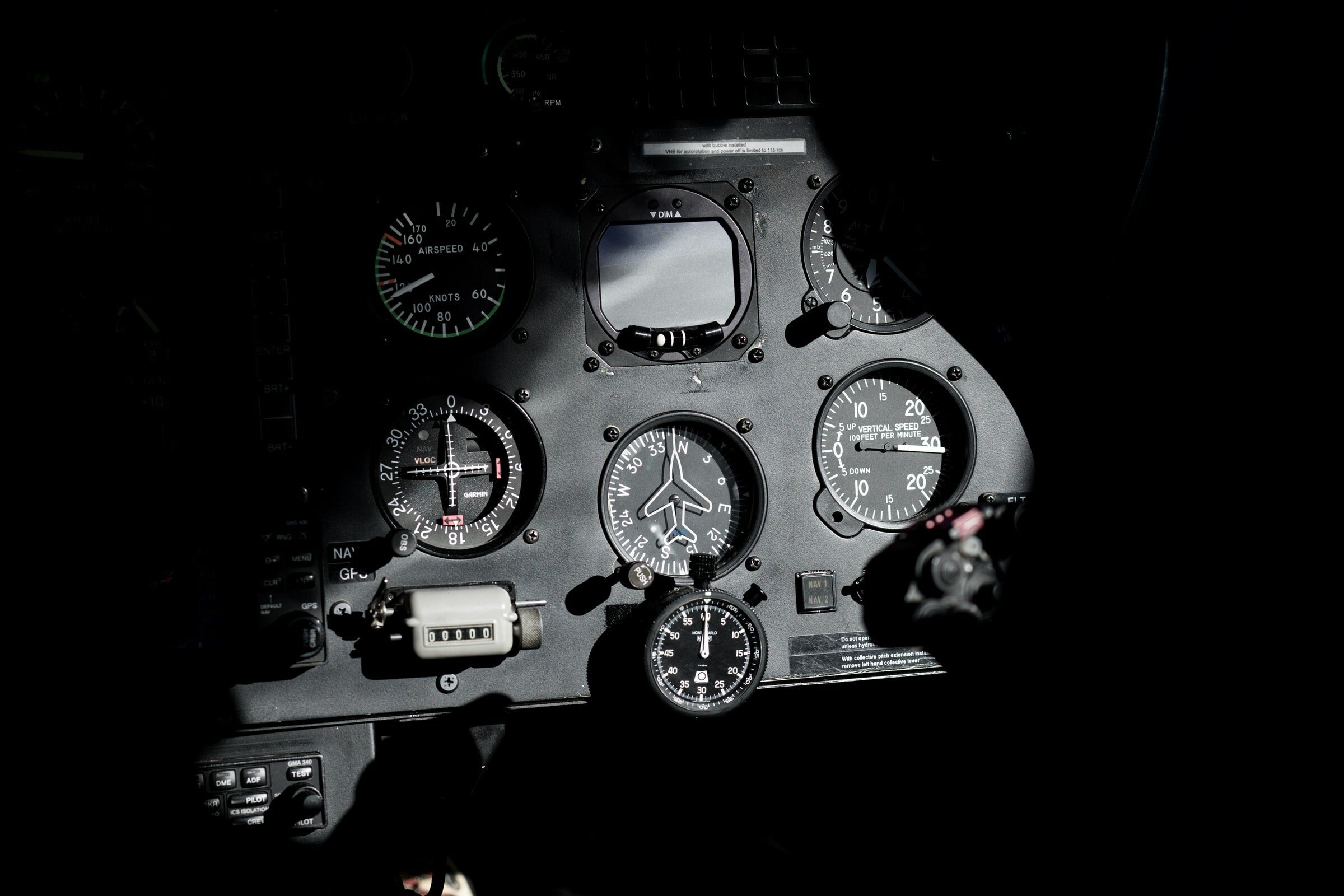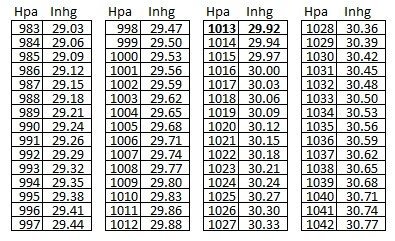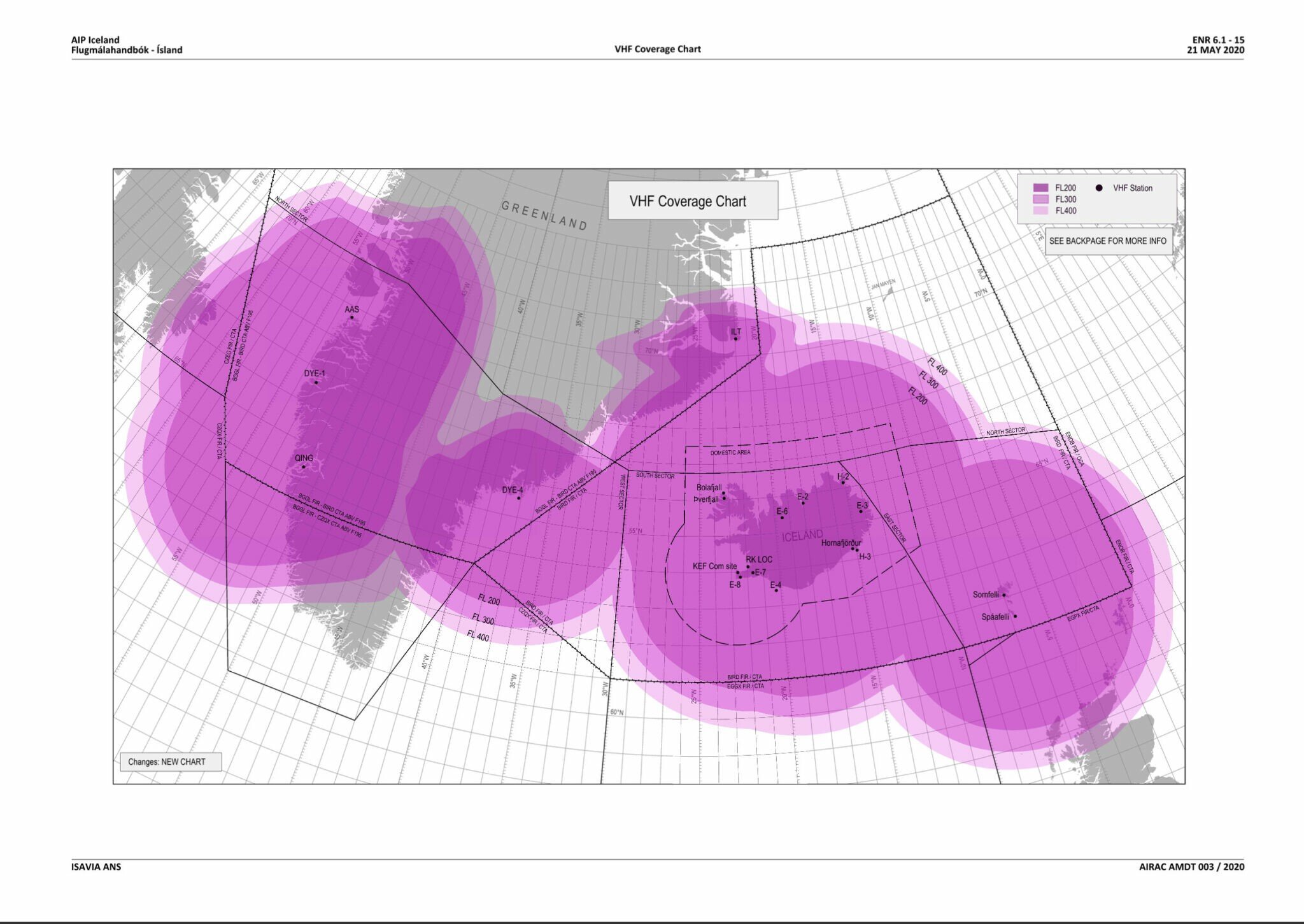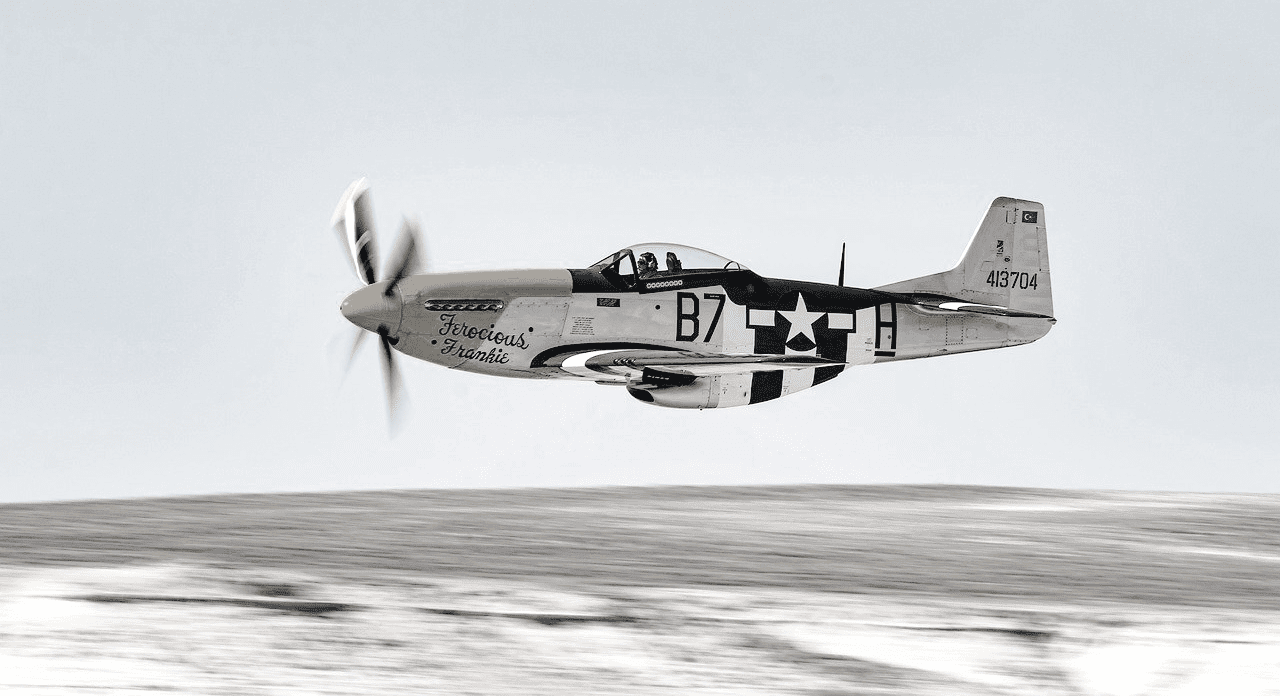Aircraft Equipment
Summary
Updated: 5/23/2025 Read time: 12 min
EDIT: Added large aircraft info: IRUs, HF, CPDLC, & LOAs.
For a Part 91 Atlantic crossing to Europe, at a bare minimum, you need one long-range navigation unit (LRNU, aka GPS), short-range navigation equipment (VOR, DME, ADF), VHF radio with 8.33 spacing and immunity, a Mode S transponder, and 1090 ES ADS-B out installed in the aircraft. An altimeter capable of toggling from inHg to hPa is not required but would be helpful. With these, you can operate through the North Atlantic along the former Blue Spruce Routes at and below FL280 or above FL420.
To maximize your access to the North Atlantic High Level Airspace (FL285-420) and Europe above FL285, you will additionally need this equipment:
Dual Long Range Navigation Units (GPS/IRUs)
2 HF Radios - or - 1 HF Radio + 1 Satvoice - or - 1 HF Radio + 1 CPDLC (FANS)
CPDLC:
Satellite-based for Oceanic (CPDLC RCP240 + ADS-C RSP180 = FANS 1/A)
VHF-based for Europe (CPDLC ATN)
TCAS 7.1 if over 12,500lb MGTOW
Paired with the corresponding LOAs:
B036 (Oceanic and Remote Continental Navigation Using Multiple Long-Range Navigation Systems, i.e., RNP 2, 4, & 10)
C052 (International GPS-based approaches. i.e., LNAV, LP, LNAV/VNAV/LPV/GLS)
Minima
A056 (Datalink Communications)
B039 (North Atlantic High Level Airspace)
B046 (RVSM)
Details
The above equipment is for operations beyond normal domestic ops. We are getting into the specific details of installed equipment requirements when flying in other counties and beyond radar and radio navigation range. You still need A TOMATO FLAMES for VFR, FLAPS for night VFR, and GRAB CARD IFR flying.
There are three distinct equipment categories to remember: Navigation, Communication, and Surveillance.
Navigation
Navigation equipment comes in three flavors: radio, area navigation (RNAV), and inertia-based systems.
Pop quiz: What are the two kinds of airspace?
A. Controlled and uncontrolled
B. Class I Navigation and Class II Nav
C. Towered and non-towered
Flying domestically, you are always within the radio navigation service volume of an NBD, VOR, and DME. This is the first kind of airspace: Class I Nav airspace. Within Class I, radio-based navigation systems are sufficient for operations. Outside the maximum service volumes of radio navigation (about 140 nm), you are in Class II airspace and must have long-range navigation capability (RNAV or inertia).
To utilize area navigation (RNAV), you need a Long Range Navigation Unit (LRNU). The most common is the satellite-based Global Navigation Satellite System (GNSS), the US-operated Global Positioning System (GPS) being the most ubiquitous. However, other satellite-based systems exist, such as Galileo (EU), GLONASS (Russia), and BeiDou (China). RNAV systems can also be TACTAN-based (VOR/TAC), DME/DME, LORAN-C, or utilize an Inertia Reference Unit (IRU).
Inertia-based systems are basically onboard position calculators. Think of it like you are your GPS satellite flying through the sky. These were cutting-edge before the proliferation of GPS and are standard equipment on mid-sized jets and up today. The advantage is having a completely independent, self-contained LRNU. The disadvantage is their cost, and their performance degrades over time. Accuracy slowly drifts and must be corrected by calibrating the system before takeoff and enroute on long legs. These systems are non-existent for smaller aircraft. Larger aircraft may be equipped with three IRUs.
You will be flying beyond the radio-based systems from Canada to Greenland to Iceland, so at least one Long Range Navigation Unit is required. That LRNU could be an RNAV (GPS) or an inertial system. A second LRNU is necessary to acquire an RNP 4 or 10 LOA.
Did you catch that new acronym: RNP, Required Navigation Performance? You may come across RNP 1, 2, 4, 5, 10, P-RNAV, and B-RNAV, which all tie into the area navigation (RNAV) concept. In simplest terms:
RNP = RNAV + integrity monitoring + fault detection notifications for the pilot
Hang on to that concept; RNP is important when completing ICAO Flight plans for aircraft equipment and understanding LOAs, which we will explore later.
Lastly, your life will be simpler if your altimeter can be set in both inHg and hPa. Reporting pressure in hPa is standard from Iceland Eastbound. If not, don’t fret. A simple conversion chart can get you by on the fly.
Boiling it down for naviagtion, at a minimum, have an installed GPS (not a portable unit) and a VOR receiver to cover the navigation equipment requirements below FL290 (GPS covers DME & ADF). Maximizing the airspace requires two LRNUs and LOA B036 for RNP 2, 4, and 10 authorization.
Communication
Lots of threes in this article. The three main communication types are VHF, HF, and Datalink.
Very High-Frequency VHF is your standard comms, ranging from 118 – 136 kHz. In Europe, there are two additional requirements. Your VHF comms need immunity, which they probably already do unless you are flying outdated equipment. Europe has required this since 2001.
Secondly, you need 8.33 kHz spacing. In the US, 25 kHz frequency spacing (119.000, 119.025, 119.050, etc.) works fine. However, the geography in Europe is much tighter, and additional frequencies are needed. Utilizing 8.33 spacing has four times the available frequencies to work with (119.000, 119.005, 119.010, 119.015, 119.025, etc.). So, from Iceland Eastbound, make sure you can dig into your radio's menu options and select the proper spacing.
Icelandic Radio Coverage map at FL200-FL400
HF stands for High Frequency and is a longer wavelength than VHF. It is better for long distances but can have background static or be unavailable if there are blackouts caused by solar radiation.
SELCAL (selective calling) is helpful but not required. When using HF radios, rather than a constant white noise of static from continuous monitoring, it is an alternate means of hailing your aircraft. If your SELCAL is working properly, you can turn down the static and can be notified via audio tone when you should contact ATC. It works over VHF and HF frequencies. Registration and a fee are required via ASRI here. Once registered, add your four-character SELCAL code to your ICAO flight plan in Box 18, Other Information: SEL/XXXX.
Across the Atlantic, the blanket regulation is that you need to be in radio contact the whole time, and in Class II airspace outside of VHF radio range, an HF is required. To fly in the NAT HLA airspace (FL285-FL420), redundant long-range communication is required. This can be in the form of 2 HF units, one HF unit with satellite-based CPDLC (SATCOM), or one HF unit with approved SATVOICE. Note that SATCOM, SATVOICE, and SELCAL are all different.
There is, however, an exception for HF radios. Flying along the former Blue Spruce Routes allows you to cross without an HF if you fly high enough to receive VHF. Depending on the route, that is either FL195 or FL250 between Canada and Greenland and about FL200 from Greenland to Iceland and Europe. Over the last decade, VHF comms have drastically improved. When flying at the appropriate altitudes, VHF comms were crystal clear for my last crossing.
You will need an HF radio beyond the Blue Spruce Routes, such as a trip to Bermuda. HF may be an option from the OEM. An alternate route is to install an additional antenna and use portable HF units. Aviation HF has rental and purchase options.
Datalink Communications
Due to the DLM (Datalink Mandate), datalink equipment and authorization are required to access the NAT HLA. Without datalink, you must fly above the NAT HLA, below, or through the Iceland - Greenland corridor. Additionally, Europe requires a separate datalink system to fly above FL285 (with exemptions).
Iceland - Greenland corridor
Datalink is an umbrella term for aircraft equipment that sends and receives text messages. There are a lot of acronyms due to the advancement of the equipment over the years and aircraft avionics manufacturers' naming conventions, but the two streams of data are either ACARS or CPDLC. The aircraft hardware is the same; the difference is the network you transmit on and who you talk to.
ACARS (Aircraft Communications, Addressing, and Reporting System) runs on ARINC's network. ARINC is one of the major worldwide Data Service Providers (DSPs). Initially founded by airlines almost 100 years ago, ARINC established non-ATC communications with dispatchers and FBOs and developed ACARS in the 70s. It has evolved and changed hands over the years, beginning as a VHF Digital Link (VDL) and then incorporating SATCOM (Satellite communications). It is now a subsidiary of Rockwell Collins. Rockwell maintains the network and supports Pre-Departure Clearances (PDC), weather reports (TWIP), Oceanic Clearances (RCL), private communication between aircraft, and intra-company messaging.
CPDLC (Controller Pilot Datalink Communications), on the other hand, handles direct ATC communication, both domestically and internationally, including oceanic airspace. CPDLC can be broadly divided into FANS or ATN.
The first CPDLC network to know, referred to as FANS (Future of Air Navigation System), connects you to the SITA network (another worldwide DSP). You can connect and communicate via VDL or SATCOM - but that happens seamlessly behind the scenes as long as you are logged on to the correct address (KUSA domestically, for example) and have filed the correct flight plan codes. Depending on your hardware, there are six available means to connect and transmit data to and from the network:
HFDL (High Frequency Datalink - for polar regions)
VDL Mode A/0 (early adopters)
VDL Mode 2 (most systems)
SATCOM INMARSAT (almost global coverage)
SATCOM MTSAT (old)
SATCOM Iridium (global coverage)
The second CPDLC network, NewPENS, is specific to Europe and is called ATN (Aeronautical Telecommunication Network). This is strictly a ground-based VDL system separate from FANS. CPDLC ATN VDL Mode 2 is required to meet the CPDLC performance specifications and access airspace above FL285. The installed equipment on your aircraft is sometimes called Link 2000+. Exemptions to this rule are (focusing on GA aircraft):
Any aircraft with a certificate of airworthiness before Jan 1, 1995.
Aircraft with FANS 1/A and an airworthiness certificate before Jan 1, 2018.
Aircraft with 19 or fewer passenger seats, and a MGTOW less than 100,000 lbs, and an airworthiness certificate before Feb 5, 2020.
Aircraft flown for testing, delivery, maintenance, or operating under CPDLC MEL relief.
King Air 90/100/200/300 series aircraft (+1 for Textron lobbying)
And these aircraft with an airworthiness certificate before Feb 5, 2020: GLEX/GL5T, C25C, C56X, F2TH, F900, E50P, E55P, E35L, PC12.
There's more! FANS and ATN CPDLC are half of "FANS 1/A," the other half being ADS-C (keep reading). FANS 1/A (1 for Boeing, A for Airbus) is the performance specification required for ATC datalink coms, met by both FANS (SITA) and ATN (NewPENS). Yes, it's a confusing way to name things. FANS 1/A is the minimum requirement; newer, more capable systems may be called FANS 1/A+ or FANS B or C in your aircraft.
FANS 1/A can have one of two latencies. RCP400/RSP400 or RCP240/RSP180. These stand for Required Communication Performance and Required Surveillance Performance, respectively. The numbers refer to the seconds required for receiving and transmitting data. While both qualify for FANS 1/A, RCP240/RSP180 is the specification required to access the PBCS Tracks (most efficient, tightest spaced tracks) in the North Atlantic. The 400 specs are generally early avionics iterations; most have moved to tighter standards.
Lastly, CPDLC can support DCL (Datalink Clearance) on the ground at some airports. Once properly logged in (KUSA), ATC can send you your IFR clearance automatically via text instead of voice. It is very similar to ACARS PDC, except better. PDC has limitations on how many clearances you can receive and cannot handle route changes. Looking at the top strip of an airport diagram will show what Datalink capabilities are available at the airport.
Surveillance
“Radar contact” or “identified.” Comforting words to hear because even with the best navigation equipment and clear communication, someone is watching for you when you mess up and may be able to assist before it’s too late.
Yet another three: primary radar, secondary radar, and ADS.
Primary radar was first effectively used during WWII. The Brits scanned the sky for incoming air attacks and were able to intercept many raids. Primary radar displays a blip on the radar screen for airborne targets.
Secondary radar began picking up aircraft transponder data. At first, it was just a tailnumber (Mode A). It expanded to include altitude (Mode C), and now newer equipment can transmit more flight information (Mode S).
Your ADS-B (Broadcast) out equipment is related but independent. By analogy, your Mode C or S transponder is a text message to air traffic controllers. Your ADS-B is your X (Twitter) account. ADS-B takes the transponder data package and publicly broadcasts it. ADS-B out is required in some form for the US, Canada, Greenland, Iceland, and European airspace.
Decades ago, the radar network expanded to cover almost everywhere overland. Besides some low-to-the-ground or mountain terrain areas, you can be confident you will be in radar coverage in the 48 states. Over the ocean, ground-based radar has typically fallen off around 100nm offshore, like radio and navigation reception.
Flying beyond radio coverage (Class II airspace) means you are in a non-radar environment. Monitoring your position and providing adequate aircraft separation involves procedural separation techniques and position reports - offically. Unofficially, the Canadians have space-based ADS-B receivers across the entire North Atlantic. So ATC can see where you are, but it's not used for aircraft separation purposes.
Then there is the previously mentioned ADS-C, the second half of FANS 1/A. ADS-C can send the same data as ADS-B, but on demand. The C means "contract," but it's easier to think of it as "contact." ATC pings your aircraft via satellite or VDL. Then, your aircraft sends the data back to them directly. CPDLC communicates with the pilots, whereas ADS-C communicates with the aircraft. FANS 1/A RCP 240/400 and RSP 400/180 values refers to your CPDLC communication equipment (RCP) and ADS-C survellience equipment (RSP) capabilities.
PC-12 Example
Navigation:
On a PC-12NG running the Honeywell APEX avionics package, there are two GPS units capable of area navigation. However, a single FMS controls both units, so the system only qualifies as a single LRNU. Adding the second FMS option ($$$$) would get you dual LRNUs and qualify the aircraft for RNP 4 LOA.
VOR, DME, ADF, and toggling between inHg and hPa come standard.
Communication:
From the factory, PC-12s have communication immunity and 8.33 spacing (+1 for European aircraft meeting European standards). The spacing is a toggle-able option within the Comms menu: Comms, Page/Detail button, select 25kHz vs 8.33kHz.
While not necessary, there are two HF options. Honeywell and Aviation HF.
Surveillance:
PC-12s with ADS-B out (from the factory or SB compliance) have Mode S Transponders and ADS-B out. The CPDLC option on some NGs is a VHF ground-based system (ATN) and would not qualify for satellite-based CPDLC (FANS 1/A) ops over the Atlantic.
Equipped as above, this PC-12 can only fly along the former Blue Spruce Routes below FL285. Adding HF would let you fly a different route, such as through the Azores if you have an excellent tailwind; however, FL280 remains your top altitude. Even if you got the second FMS and RNP 4 LOA, without FANS datalink equipment, you are limited to FL280 or the Iceland - Greenland Corridor.
If you’re operating a more capable aircraft, check out Goodbye Blue Spruce Routes for more information.
G600 Example
Navigation: A G600 has all the bells and whistles for worldwide navigation running the Honeywell Symmetry avionics system: dual GPS units, three FMS units, three IRUs, dual VORs, DME, and ADFs.
Communication: From the factory, a G600 will have VHF communication immunity and 8.33 spacing, dual HF radios, SELCAL, and Datalink capability:
CPDLC ATN VDL Mode 2 (European ATN-B1 CPDLC)
CPDLC FANS 1/A VDL Mode A/0 (ACARS)
CPDLC FANS 1/A VDL Mode 2 (VHF FANS)
CPDLC FANS 1/A SATCOM (Inmarsat FANS)
Surveillance: Mode S transponders, TCAS 7.1, ADS-B Out, and ADS-C RSP180 out are all standard.
Authorizations and Registrations: Being equipped is not the same as being operationally approved. Register SELCAL, Domestic CPDLC, and ATN CPDLC. And add the following LOAs:
B036 (Oceanic and Remote Continental Navigation Using Multiple Long-Range Navigation Systems, i.e., RNP 2, 4, & 10)
C052 (International GPS-based approaches. i.e., LNAV, LP, LNAV/VNAV/LPV/GLS)
Minima
A056 (Datalink Communications)
B039 (North Atlantic High Level Airspace)
Equipped as above, this G600 is fully redundant and capable of flying anywhere worldwide.
What if you fly something in between the minimum and maximum? NAT Doc 007 1.1.7 has a handy chart to reference to determine where you can and cannot fly. Note that it references equipment only; you still need the LOAs to match. Or, put another way, without the LOA, you don't have the equipment!
(1) When outside VHF coverage.
(2) Certified installation of equipment providing the ability to navigate along the cleared track.
(3) The requirements for T13, T16, T25, and T213 are the same as the requirements for “NAT HLA DLM” and “NAT OUTSIDE HLA” depending on the operating altitude.
(4) The NAT corridors offer a solution for aircraft that are lacking data link and/or communication and/or
navigation equipment meeting NAT HLA requirements.
(5) See section NAT Doc 007 1.7.5 for details (this is the DLM exemption area, called the Iceland - Greenland corridor, Azores corridor, and Bodo corridor.)
Aviate
Verify you can select 25 kHz and 8.33 kHz in your avionics unit. While there, find the altimeter menu and check if you can toggle between inches of Mercury (inhg, i.e., 29.92) and hectopascals (hPa, i.e., 1013).
If you are interested in HF communication, check with your avionics support regarding an installation and/or with Aviation HF.
Larger aircraft operators: check and/or get your LOAs. All the above required LOAs are included in the FAA’s streamlined LOA process, making the application process much quicker.
To get started with Datalink:
Consult your AFM or STCs to see what you have onboard.
Acquire LOA A056 to authorize Datalink Communications.
Register for Domestic CPDLC in the US (all details here)
Register for ATN use in Europe. To register for ATN, contact the Eurocontrol Datalink team (ectl_nm_datalink_team@eurocontrol.int) and request access to the ATN CPDLC Logon List dashboard. Both domestic and Eurocontrol registrations require specific part numbers found in your maintenance manuals.
Update your ICAO flight plan codes to reflect your capabilities properly.
Navigate
Article 7 of 22 on your international operations journey. Eject at any time to land at international articles.











